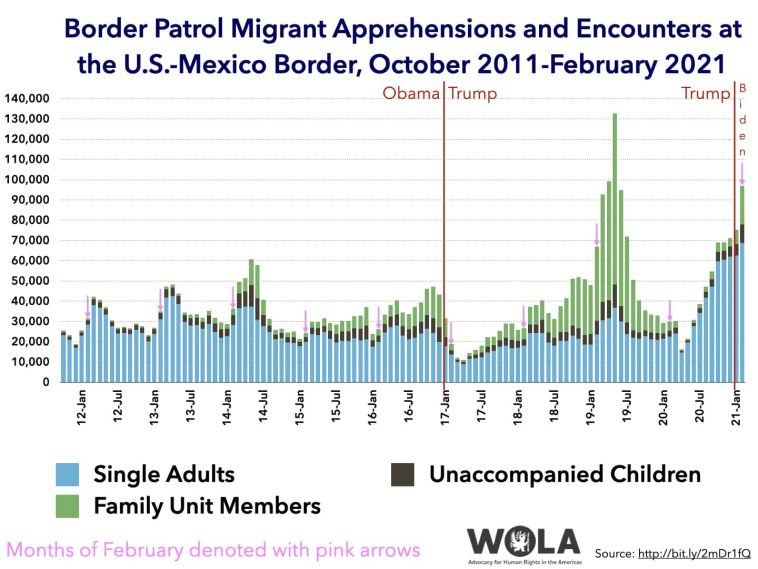In her quest to move stealthily into Mexico, Ana Maria was presented with a choice that many migrants dread: pay an illegal entry fee or potentially fall into the hands of merciless criminals who profit immensely from the predicament of immigrants. Meanwhile, the elected President of the United States, Donald Trump, is on the brink of assuming office, accompanied by his stern promise to confront and curb unlawful immigration. In the midst of these pronouncements, migrant exploiters are capitalizing on the desperation of those vying to settle down before the stringent measures kick in.
Upon reaching Tecun Uman, a bounder town in Guatemalan, Ana Maria, who had embarked on her journey from Honduras with her three daughters, was covertly photographed and videotaped by members of a gang. This was a misfortune they encountered in transit to the United States. Ana Maria’s payment, amounting to $250, covered both a river rafting journey and a subsequent taxi commute to a refuge in Tapachula, located in the farthest part of Mexico. According to the 26-year-old, paying this fee was their singular avenue into the country.
Ana Maria, who opted for her identity to be kept secret due to safety concerns, is a mere representation of the countless individuals caught up in the web of this lucrative human smuggling business. The trade, which comes with alarming financial implications and benefits for the criminals involved, is believed to yield between $7 and $10 billion per year. These figures have been validated by both the United Nations and the Financial Action Task Force.
The illicit trade is run by a diverse network that envelops even the most savage drug cartels based in Mexico. It was reported that over 900,000 unregularized migrants were handled by the Mexican authorities in 2024. In the same vein, the United States reported encounters with an estimated 2.1 million immigrants at its southern border within the fiscal year concluding in September.
These marauding groups often apprehend aspiring immigrants before they can access the established route between Guatemala and Mexico. Those who are unable to meet the ‘entry fee’ requirements are often forced into a corner, where they have to reach out to their relatives for financial rescues, amounting to hundreds of dollars. Should the relatives comply, the criminals then leave a mark on the immigrants, as a sign of clearance.
In recent times, Chiapas state in Mexico has witnessed an increased spate of violent confrontations, as local gangs and the Sinaloa and Jalisco New Generation cartels, the two most dominant criminal organizations in the country, wrestle over control. There are also instances where local gangs hand over intercepted immigrants to these cartels for further extortion or human trafficking. This is according to information acquired by the International Organization for Migration (IOM).
The stranglehold that these criminal entities have on immigration processes commences way south in the Darien jungle, an undulating, lawless jungle located between Colombia and Panama. Here, Alberto, a Venezuelan aged 50, narrates how he was coerced into parting with $1,800 to a group that claimed to offer safe passage for him, his wife, and their three offspring. ‘After taking your money in Colombia, they accompany you through the jungle, masking their intentions with a promise of protection’, Alberto explains.
Alberto’s story mirrors the experiences of many others who, in desperation, flee Venezuela’s escalating crises. There are also instances where migrants are forcefully dispossessed by these criminals. ‘They left us with nothing’, revealed Dayana, another Venezuelan aged 36, who shares her story of how they were robbed of all their belongings in the Darien jungle.
Within the same jungle resides Colombia’s most powerful criminal gang, the Clan del Golfo. They determine the routes passable for immigrants and reap immense financial benefits from the desperation of these immigrants. This revelation was made by the deputy director for the Americas at Human Rights Watch, Juan Pappier.
On the Panamanian side, locals in small towns have found new ways to earn money from the migration crisis. Over a million people have passed through the towns of Canaan Membrillo and Bajo Chiquito in the last three years and were each charged $25 to be transported downstream to a shelter. Formerly catering to a few dozen people, small shops now serve hundreds of migrants daily, selling everything from flip-flops to SIM cards and clothes to fend off the elements.
Upon leaving the jungle, the immigrants are forced to part with $40 for a bus ride to the Costa Rican border. The reality of these costs force some immigrants to take on massive debts, as in the case of Ericka, a Guatemalan immigrant who is currently indebted to the tune of $15,000.
Smugglers often lure these distressed migrants with false promises. Some suggest access to tunnels dug beneath the border, while others sell fraudulent asylum appointments. In some cases, the dangers posed to these migrants extend beyond the criminal outfits and extend to corrupt officials.
One Panamanian woman recounts how the Guatemalan police stripped her of all her cash. ‘The police took everything I had,’ she lamented. Despite these horrendous experiences, the flow of migrants persists, underscoring the desperate situations they are fleeing from and their unwavering hope for a better future.


